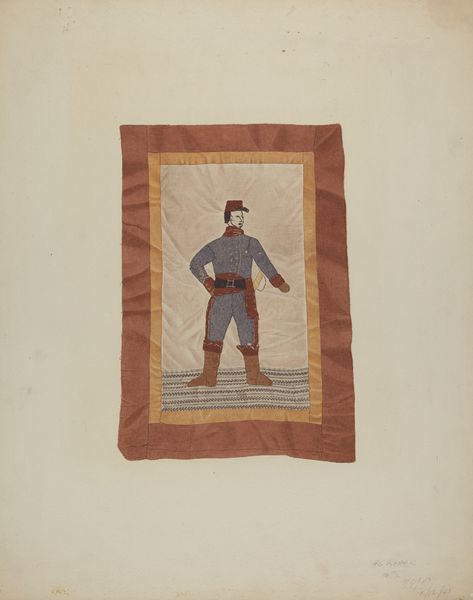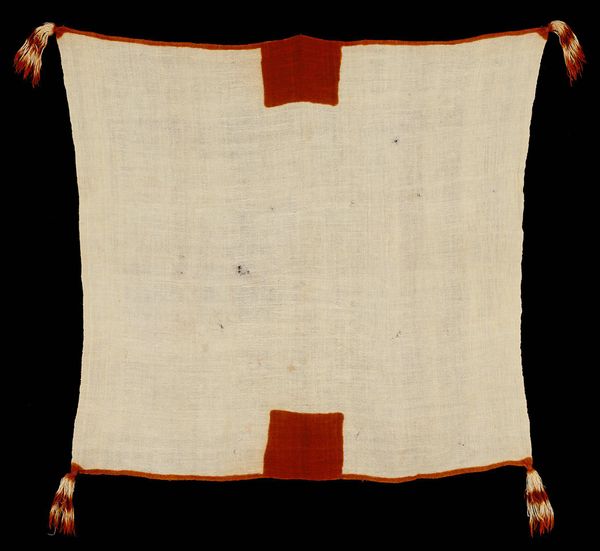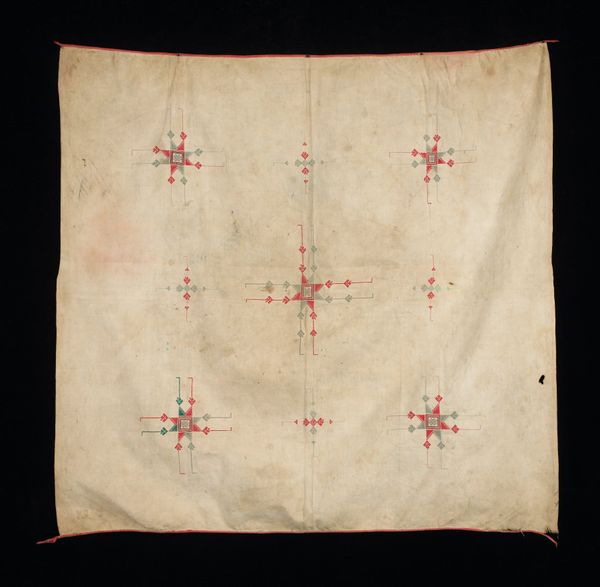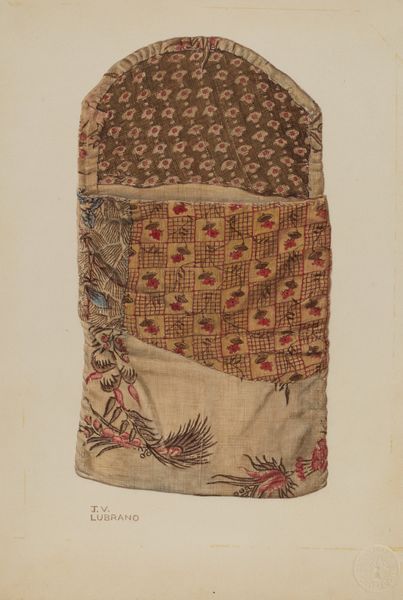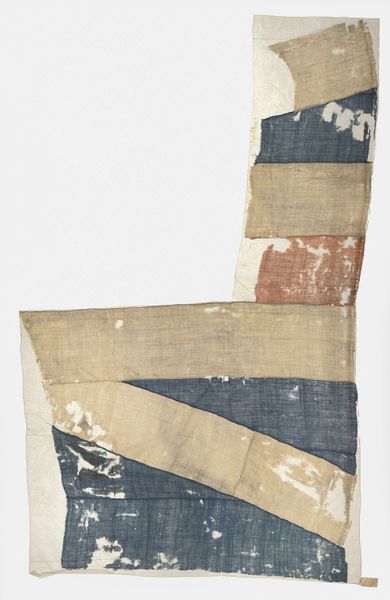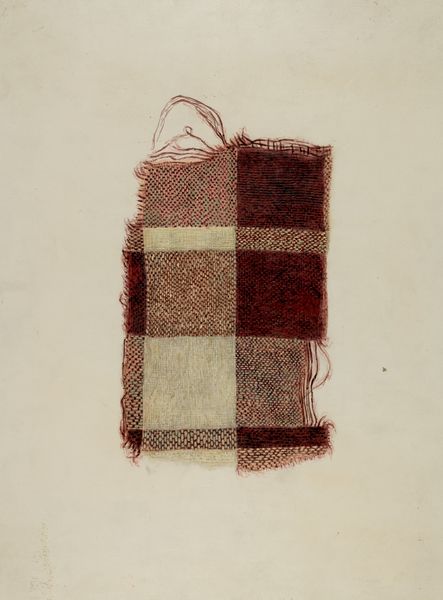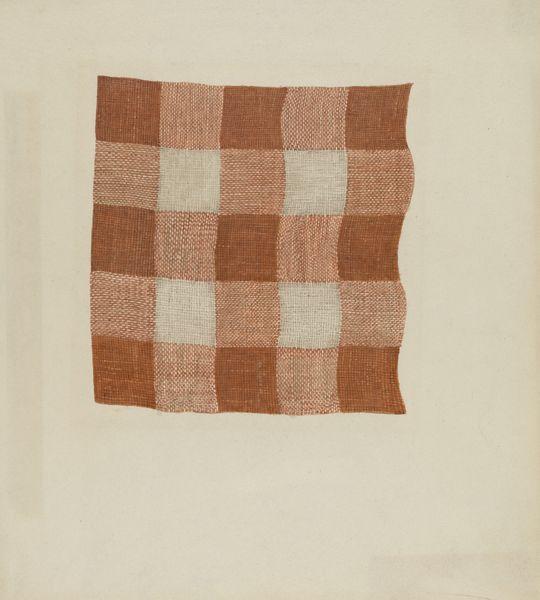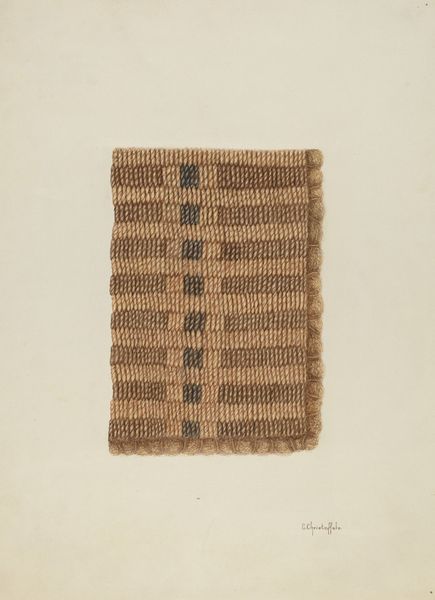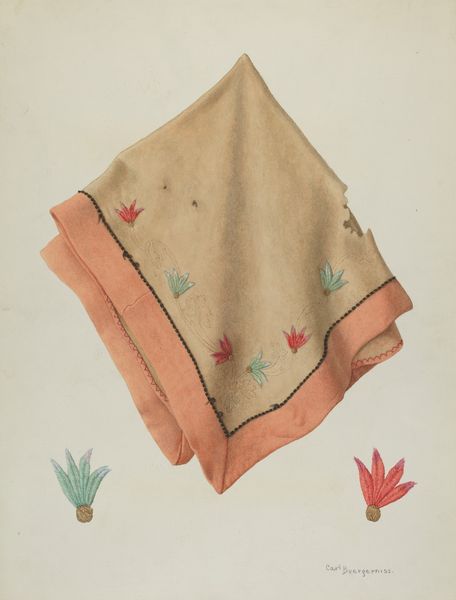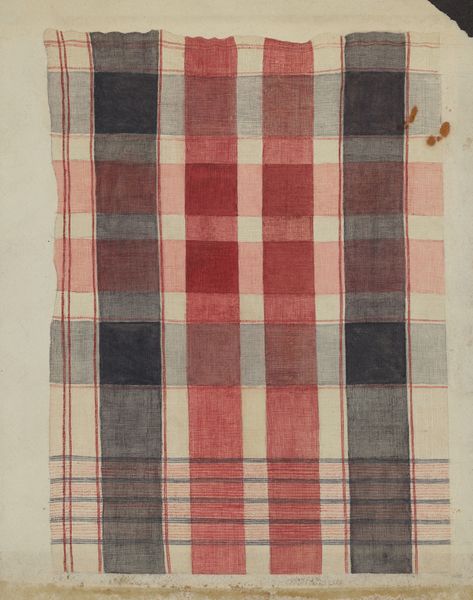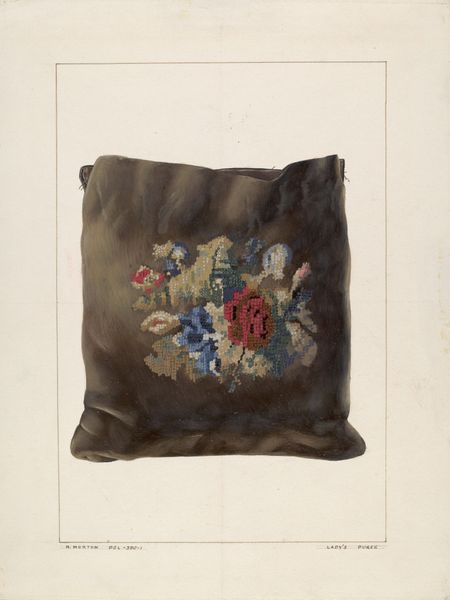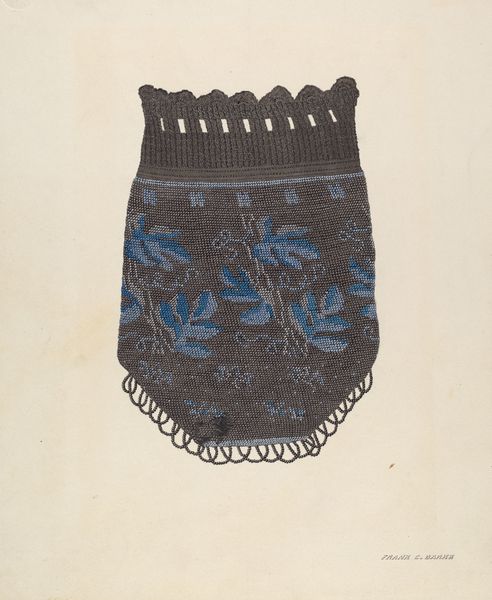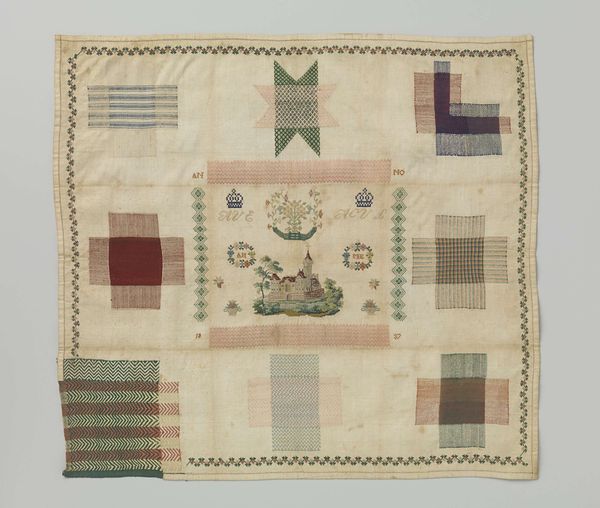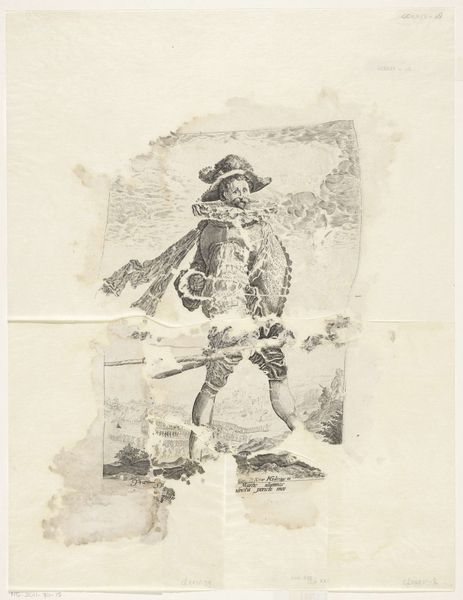
drawing, textile
#
portrait
#
drawing
#
decorative element
#
textile
#
figuration
#
folk-art
Dimensions: overall: 49.7 x 40.1 cm (19 9/16 x 15 13/16 in.)
Copyright: National Gallery of Art: CC0 1.0
Curator: This striking textile work, “Pillow top Insert,” dates back to around 1940 and invites an immediate consideration of folk art traditions. Editor: I am captivated by its directness. The figure's angularity, its naive geometry—it gives the piece a powerful, elemental presence. The artist had such command of shape, creating form from color blocking, the layering creates depth from flat materials. Curator: And what shapes those forms is, most obviously, a depiction of a male figure in military attire. Given the date, this could signal something about wartime craft and how representations of masculinity become intertwined with national identity, constructed and deconstructed through domestic skills like sewing. Editor: You highlight the importance of time and identity while the artistic focus stays with composition, the careful balancing of the central panel against its borders, that's no small feat in an artwork like this. There’s a delightful interplay between rigid, vertical lines of his form and the subtle textural variations within the fabrics used, adding nuance without disrupting the initial visual impact. Curator: Exactly, considering the intersections between personal and political textiles gives agency to traditionally dismissed domestic practices—empowering craft as a means of preserving folk culture, challenging established hierarchies within the artistic canon. Think about whose stories get told and how. Editor: Interesting to see, how the folk artist manages to extract and recombine those principles into a distinct, highly effective symbolic language, communicating narratives on an intimate level. There is an immediacy, in the limited color range and graphic-like simplicity, a quality almost entirely removed from typical gallery art practices of the era. Curator: In that way, it defies its domestic setting, becoming an intervention. These objects tell of lives otherwise untold; histories interwoven within each stitch. And it's not just a piece of cloth, it’s a conduit—a tangible representation of resilience, heritage, and the narratives carried forward through generations. Editor: Thank you, I see its emotional dimensions now. It holds and shows so much more than mere surface texture. Curator: And, I admire its technical qualities even more. The artist skillfully transformed fabric and thread into this important object.
Comments
No comments
Be the first to comment and join the conversation on the ultimate creative platform.
